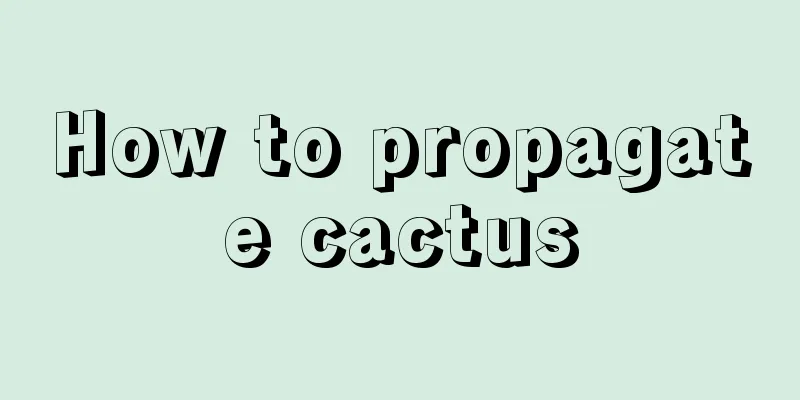Planting methods and precautions for Panax notoginseng potted plants

|
Panax notoginseng is a plant that prefers a moist growing environment. It is not only moisture-resistant, but also drought-resistant, and has a strong adaptability to the soil environment. Although Panax notoginseng is a vine plant, its root system tends to grow shallowly, and its stems and vines can grow a large number of aerial roots, so it is very suitable even as a potted plant. Potted Panax notoginseng planting method1. Soil: When planting potted Panax notoginseng, you need to use loose, fertile, and well-breathable soil. Generally, humus soil, garden soil, and sandy river soil are all acceptable. You can also add a small amount of perlite to enhance its drainage. 2. Choose a pot: When planting potted Panax notoginseng, it is best to choose a flower pot of a suitable size. Generally, a clay pot or a tile pot can be used. At this time, you can choose a larger flower pot to provide sufficient space for the growth of the plant. 3. Planting: When planting Panax notoginseng, it is advisable to choose Panax notoginseng seeds with good growth for sowing and planting. Panax notoginseng seeds can be directly sown in the prepared potting soil, water it appropriately, and keep the soil moist. Fertilizer needs to be applied once after planting, and organic fertilizer can be used. 4. Watering: Panax notoginseng seedlings can grow 3-4 months after sowing. During this period, watering must be controlled reasonably. It is best to use a sprinkler to spray water. You can also water it 2-3 times every 20-30 days. Watering needs to be thorough at one time. After the rainy season comes, you can also choose rainwater for irrigation. 5. Light: Panax notoginseng that has grown for two years does not require much light because its light transmittance is relatively low. However, Panax notoginseng that has grown for more than three years needs sufficient light conditions, and at least 8 hours of light per day should be guaranteed. Matters Needing Attention in Panax Notoginseng MaintenanceAlthough Panax notoginseng has good insect resistance, if it is unfortunately infected, it will need to be sprayed with insecticide for treatment. Also, be careful not to allow the occurrence of lesions. It lives in a high temperature and high humidity environment and is more susceptible to diseases. When discovered, the diseased leaves must be trimmed off in time. |
<<: Can chrysanthemums be pruned? What should be paid attention to when pruning?
>>: How to grow Clivia well and how to grow Clivia beautifully
Recommend
Taboos on eating lotus, what are the functions of lotus
1. Taboos on consumption 1. Don’t eat too much: A...
How to propagate the noon flower
1. Seeding method (1) Time control: If this metho...
The meaning and symbolism of Clivia
1. Meaning and Symbolism Its flower language is n...
When is the right time to prune a sycamore tree?
Pruning of sycamore trees Pruning the sycamore tr...
What kind of light can replace sunlight for plants (can the lights at home provide supplementary light for plants)
What kind of light can replace sunlight to supple...
Planting method of Phellinus igniarius
Coriolus versicolor is a common Chinese medicine....
Cultivation method of small water fig
1. Temperature Normally, the water fig should be ...
The difference between Melaleuca alternifolia and Salix palinurus
1. From the appearance and color Callistemon: The...
What are the techniques for growing peanuts to achieve high yields?
Peanuts are a popular food that can be eaten not ...
How to raise Veronica
1. Pot soil selection The flowerpot should be of ...
Can Paulownia flowers be eaten?
Are Paulownia flowers poisonous? Paulownia flower...
The efficacy and function of Calla Lily
Garden ornamental value When talking about Calla ...
Wisteria flowering period
Flowering period Wisteria usually blooms in sprin...
The value and function of calcium fruit
Edible and drinking The fruit of the calcium frui...
What vegetables are suitable for planting during the Grain in Ear solar term?
The Grain in Ear solar term is around the beginni...









